Sarah Sundin's Blog, page 427
June 4, 2013
Today in World War II History
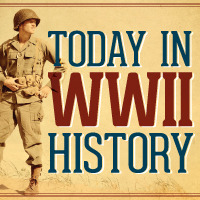 70 Years Ago—June 4, 1943: Luftwaffe bombs Gorky, Russia in first German strategic air raid against Soviet industrial centers.
70 Years Ago—June 4, 1943: Luftwaffe bombs Gorky, Russia in first German strategic air raid against Soviet industrial centers.
Published on June 04, 2013 01:00
June 3, 2013
A Tribute to Rosie the Riveter
 Rosie the Riveter has come to represent the women of World War II. We all love Rosie. She’s strong but cute. She has biceps, but she curls her hair and does her nails. And look at that chin—she won't let anyone tell her what she can or can’t do. She is woman; hear her riveting gun.
Rosie the Riveter has come to represent the women of World War II. We all love Rosie. She’s strong but cute. She has biceps, but she curls her hair and does her nails. And look at that chin—she won't let anyone tell her what she can or can’t do. She is woman; hear her riveting gun.The 1940 census counted 132 million people in the USA. During the war, 11 million men and women served in the armed forces. Even if the economy had continued at its pre-war level, that would have caused a significant drop in the workforce, but with the enormous increase in production, more workers were desperately needed. And that meant women.
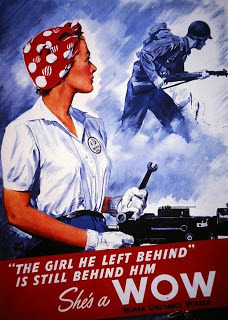 American industry actively recruited women to work in war jobs, and women’s war work was praised in songs, posters, advertisements, and movies. The “We Can Do It” poster by J. Howard Miller (1942), produced for a campaign at Westinghouse, is most closely associated with Rosie the Riveter, but actually wasn’t identified as a “Rosie” at the time.
American industry actively recruited women to work in war jobs, and women’s war work was praised in songs, posters, advertisements, and movies. The “We Can Do It” poster by J. Howard Miller (1942), produced for a campaign at Westinghouse, is most closely associated with Rosie the Riveter, but actually wasn’t identified as a “Rosie” at the time. The song “Rosie the Riveter” (Redd Evans/John Jacob Loeb, copyright 1942) praised the girl on the assembly line and was recorded by Kay Kyser, the Four Vagabonds, and others. (see YouTube video below for the Four Vagabonds 1943 recording)
On May 29, 1943, Norman Rockwell’s “Rosie the Riveter” painting appeared on the cover of The Saturday Evening Post. Rosie’s foot stamps out Hitler’s Mein Kampf, a riveting gun lies across her lap, and “Rosie” is printed on her lunchbox. Throughout the years, many women have claimed to be the inspiration for the song, the poster, or the painting. Regardless, Rosie has come to represent all women who contributed to the war effort by stepping into men’s workboots.
 During the war, 19 million women held jobs outside of the home, up from 12 million in 1940. Thirty percent of these women followed Rosie and worked in factories, where they faced opposition. Some believed women wouldn’t be capable of performing men’s jobs, and some were convinced the women were there to seduce the men. However, Rosie and her friends proved to be able workers—and were even preferred in some jobs that benefitted from women’s smaller fingers and attention to detail.
During the war, 19 million women held jobs outside of the home, up from 12 million in 1940. Thirty percent of these women followed Rosie and worked in factories, where they faced opposition. Some believed women wouldn’t be capable of performing men’s jobs, and some were convinced the women were there to seduce the men. However, Rosie and her friends proved to be able workers—and were even preferred in some jobs that benefitted from women’s smaller fingers and attention to detail. They faced other challenges. While 2.75 million working women had children under the age of fourteen, day care was not available early in the war. Mothers relied on relatives or friends—or left the children unattended. Movie theaters reported an unsettling trend of young children left all day at the movies unsupervised. Savvy employers began to provide on-site day care, and centers were also established at schools.
They faced other challenges. While 2.75 million working women had children under the age of fourteen, day care was not available early in the war. Mothers relied on relatives or friends—or left the children unattended. Movie theaters reported an unsettling trend of young children left all day at the movies unsupervised. Savvy employers began to provide on-site day care, and centers were also established at schools.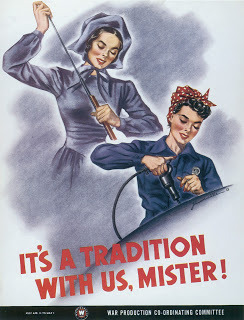 Women struggled for equal treatment. Although the War Labor Board decreed in April 1943 that women in war jobs were to receive equal work for equal pay, the average wage for female workers remained significantly lower. As the newest employees on the job, women lacked seniority under union rules and were mostly stuck with the swing swift—an extra problem for mothers with young children at home.
Women struggled for equal treatment. Although the War Labor Board decreed in April 1943 that women in war jobs were to receive equal work for equal pay, the average wage for female workers remained significantly lower. As the newest employees on the job, women lacked seniority under union rules and were mostly stuck with the swing swift—an extra problem for mothers with young children at home.Women played an important role in the extraordinary increase in production during the war, contributing to the “Arsenal of Democracy” that helped win the war for the Allies.
Here’s to all the Rosies! They could do it!
Selected sources:
Lingeman, Richard R. Don’t You Know There’s a War on? The American Home Front 1941-1945. New York: G.P. Putnam’s Sons, 1970.
Library of Congress video about Rosie the Riveter.
Published on June 03, 2013 02:00
Today in World War II History
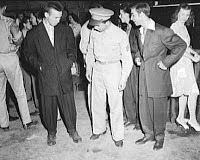 Soldier inspects zoot suits worn by two youth.70 Years Ago—June 3, 1943: Zoot suit riots begin—sailors and Mexican-Americans scuffle in Los Angeles, as servicemen resent flamboyant “unpatriotic” clothing of Latino youth; over the next several days over 150 people will be injured.
Soldier inspects zoot suits worn by two youth.70 Years Ago—June 3, 1943: Zoot suit riots begin—sailors and Mexican-Americans scuffle in Los Angeles, as servicemen resent flamboyant “unpatriotic” clothing of Latino youth; over the next several days over 150 people will be injured.
Published on June 03, 2013 01:00
June 2, 2013
Today in World War II History
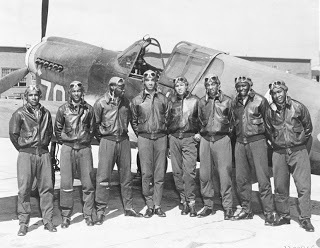 70 Years Ago—June 2, 1943: Combat debut of 99thFighter Squadron (Tuskegee Airmen) with the US 12th Air Force in North Africa, the first black squadron.
70 Years Ago—June 2, 1943: Combat debut of 99thFighter Squadron (Tuskegee Airmen) with the US 12th Air Force in North Africa, the first black squadron.
Published on June 02, 2013 01:00
June 1, 2013
Today in World War II History
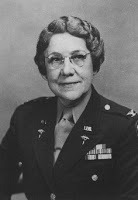 Col. Florence Blanchfield, ANC70 Years Ago—June 1, 1943: British actor Leslie Howard (Gone With the Wind) killed when his airliner from Portugal is shot down by German Ju 88. Col. Florence Blanchfield becomes superintendent of US Army Nurse Corps.
Col. Florence Blanchfield, ANC70 Years Ago—June 1, 1943: British actor Leslie Howard (Gone With the Wind) killed when his airliner from Portugal is shot down by German Ju 88. Col. Florence Blanchfield becomes superintendent of US Army Nurse Corps.
Published on June 01, 2013 01:00
May 31, 2013
Today in World War II History
 70 Years Ago—May 31, 1943: Coal miners in US launch strike that will enrage the nation. “Archie” comics first broadcast on radio.
70 Years Ago—May 31, 1943: Coal miners in US launch strike that will enrage the nation. “Archie” comics first broadcast on radio.
Published on May 31, 2013 01:00
May 30, 2013
Book Beat - The Heart Stone by Sherry Kyle
 Jessica MacAllister has worked hard as a single mom to protect her little son, so when his no-good father demands a meeting, Jessica flees to the sanctuary of Santa Cruz, where her beloved Uncle George lives. However, George recently lost his leg to a dangerous infection, has nowhere to live, and is depressed. Handsome firefighter Nick Fuller might be able to solve their housing problem - but he has his own problems to deal with. Meanwhile, widow Evelyn Sweeney finds herself thinking of her long-lost sweetheart...George MacAllister.
Jessica MacAllister has worked hard as a single mom to protect her little son, so when his no-good father demands a meeting, Jessica flees to the sanctuary of Santa Cruz, where her beloved Uncle George lives. However, George recently lost his leg to a dangerous infection, has nowhere to live, and is depressed. Handsome firefighter Nick Fuller might be able to solve their housing problem - but he has his own problems to deal with. Meanwhile, widow Evelyn Sweeney finds herself thinking of her long-lost sweetheart...George MacAllister.One heart-shaped ring binds them together. When these four lives intersect, forgiveness and healing and reconciliation result.
The Heart Stone by Sherry Kyle has a style as breezy as its beachside setting, but makes you think about the boundaries of forgiveness and loyalty. From six-year-old Jacob to George and Evelyn in their sixties, each character is drawn with compassion and understanding, with faults and fears to overcome. And there's sweet romance and plenty of humor! So add The Heart Stone to your beach bag!
Published on May 30, 2013 02:00
Today in World War II History
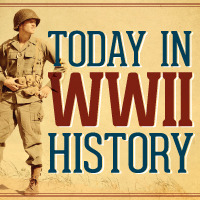 70 Years Ago—May 30, 1943: US secures Attu in the Aleutians, 700 Americans and 2600 Japanese killed (only 29 surrender). All-American Girls Professional Baseball League begins first 108-game season with 4 teams (Rockford, Kenosha, Racine, South Bend).
70 Years Ago—May 30, 1943: US secures Attu in the Aleutians, 700 Americans and 2600 Japanese killed (only 29 surrender). All-American Girls Professional Baseball League begins first 108-game season with 4 teams (Rockford, Kenosha, Racine, South Bend).
Published on May 30, 2013 01:00
May 29, 2013
Today in World War II History
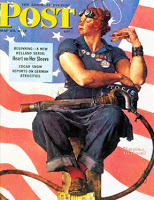 70 Years Ago—May 29, 1943: Japanese launch banzai counterattack on Attu in the Aleutians, which is repelled by US forces. Norman Rockwell’s “Rosie the Riveter” appears on cover of The Saturday Evening Post.
70 Years Ago—May 29, 1943: Japanese launch banzai counterattack on Attu in the Aleutians, which is repelled by US forces. Norman Rockwell’s “Rosie the Riveter” appears on cover of The Saturday Evening Post.
Published on May 29, 2013 01:00
May 28, 2013
Today in World War II History
 USS Cowpens70 Years Ago—May 28, 1943: Light carrier USS Cowpens, "the Mighty Moo," commissioned, Camden NJ.
USS Cowpens70 Years Ago—May 28, 1943: Light carrier USS Cowpens, "the Mighty Moo," commissioned, Camden NJ.
Published on May 28, 2013 01:00



